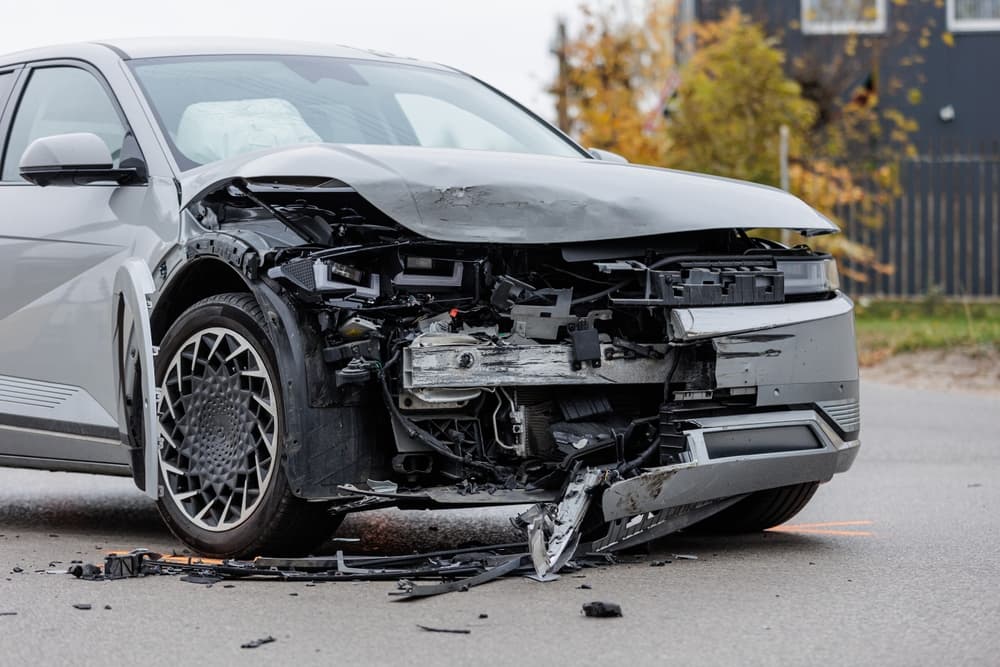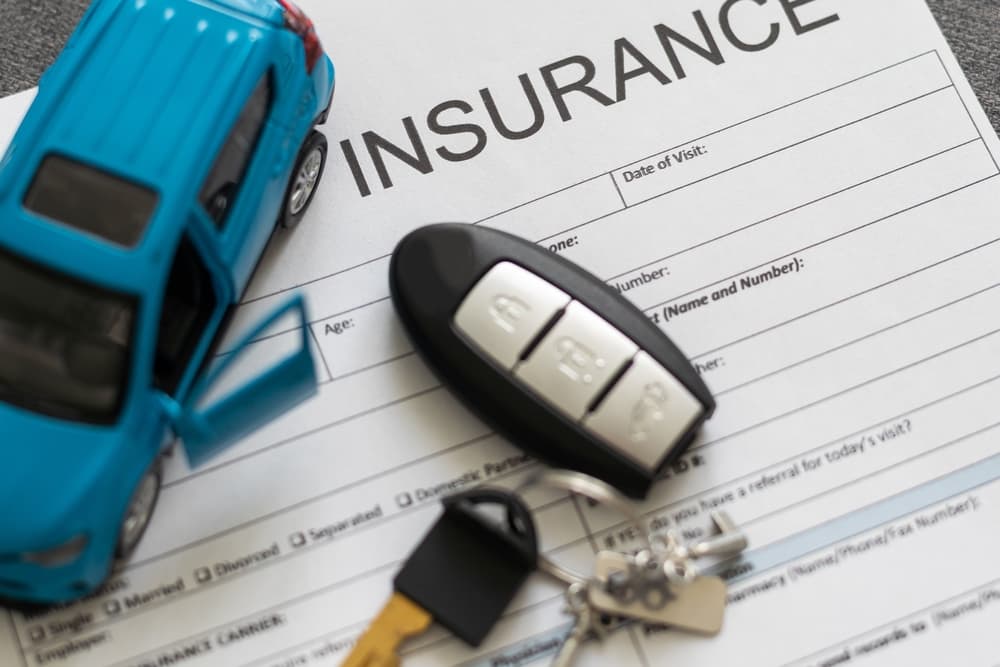Car accidents can be complicated situations, especially when they involve borrowed vehicles. If you've been in an accident while driving a friend's car, or if someone else had an accident while driving your vehicle, you may be wondering about liability.
Who is responsible for damages and injuries in these cases? The car owner or the driver? These questions don't always have an exact answer, as liability can depend on many factors. In this situation, consulting a seasoned car accident attorney in Columbus is the best decision.
Schedule Your Free Consultation
Liability in Car Accidents: Key Factors

Below are some basic principles of liability in car accidents:
- Negligence: In most car accident cases, liability is determined based on negligence. The driver who was negligent is usually held responsible for the resulting damages and injuries.
- Vicarious Liability: This legal principle holds one party responsible for the actions of another. In the context of car accidents, it can sometimes make vehicle owners liable for accidents caused by other drivers of their car.
- Permissive Use: This refers to situations where a vehicle owner gives permission to someone else to use their car. The concept of permissive use is crucial in determining liability in borrowed car scenarios.
- Insurance Coverage: Auto insurance policies play a significant role in determining who pays for damages and injuries in an accident. These policies often have specific provisions for situations involving borrowed vehicles.
- State Laws: Liability laws vary from state to state. Some states have specific statutes addressing owner liability, while others rely more heavily on common law principles.
Keep in mind that liability isn't always an either/or situation between the owner and the driver. In some cases, both parties may share responsibility, or other factors may come into play.
The General Rule: The Insurance Follows the Car
In most cases, the general rule is that insurance follows the car, not the driver. This means that the car owner's insurance is typically the primary insurance in the event of an accident, regardless of who was driving at the time. Here's how this usually works:
- If you borrow a friend's car and get into an accident, your friend's auto insurance would typically be the primary coverage for the incident.
- Your own auto insurance might come into play as secondary coverage if the damages exceed the limits of your friend's policy.
- If you don't have your own auto insurance, or if your coverage limits are too low, you could be personally liable for any damages that exceed your friend's policy limits.
This general rule exists because auto insurance policies are typically tied to specific vehicles rather than to drivers. The policy is designed to cover the car, regardless of who might be driving it at any given time.
However, this is just a general rule. The actual determination of liability and insurance coverage can be much more complicated, depending on the circumstances of the accident and the details of the insurance policies involved.
When the Car Owner May Be Liable
There are several scenarios where the car owner may be held liable for an accident, even if they weren't driving:
- Negligent Entrustment: If the car owner knowingly lends their vehicle to someone who is incompetent, reckless, or impaired, they may be held liable under the theory of negligent entrustment. For example, if an owner lends their car to someone they know is intoxicated or doesn't have a valid driver's license, they could be held responsible for any resulting accidents.
- Vehicle Defects: If the accident was caused by a problem with the car that the owner knew about (or should have known about) and failed to address, they might be held liable. This could include issues like faulty brakes or bald tires.
- Employer-Employee Relationships: If an employee causes an accident while driving a company car for work-related purposes, the employer (as the vehicle owner) may be held liable under the principle of vicarious liability.
- Family Car Doctrine: Some states have a "family car doctrine" or "family purpose doctrine." Under this rule, the owner of a family car may be held liable for accidents caused by family members who were using the car for family purposes.
- Vicarious Liability Laws: Some states have specific laws that hold car owners vicariously liable for accidents caused by people they allow to drive their cars. New York, for example, has a law that makes car owners liable for accidents caused by anyone driving their car with their permission.
Even in these scenarios, the driver isn't necessarily off the hook. Both the owner and the driver could potentially be held liable, depending on the circumstances.
The car owner's liability in these situations often stems from the legal concept of vicarious liability. This principle recognizes that in certain relationships (like car owner and permitted driver), it's fair to hold one party responsible for the actions of another.
The rationale is that the car owner has the power to decide who uses their vehicle and therefore bears some responsibility for what happens when they allow others to drive.
When the Driver May Be Liable
While the car owner's insurance is often primary in accidents involving borrowed vehicles, there are several situations where the driver may be held liable:
- Driving Without Permission: If the driver took the car without the owner's consent (i.e., stealing or unauthorized use), they would typically be fully liable for any accidents they cause. In such cases, the owner's insurance may not cover the incident at all.
- Driving Outside the Scope of Permission: If the driver was given permission to use the car for a specific purpose but then used it for something else, they might be held liable. For example, if someone borrows a car to go to the grocery store but instead takes a long road trip and gets into an accident, they may be considered outside the scope of the owner's permission.
- Intentional Acts: If the driver intentionally causes an accident or damage, they would likely be held personally liable. Most insurance policies don't cover intentional acts.
- Excluded Drivers: If the driver is specifically excluded from the owner's insurance policy, they may be personally liable for any accidents they cause while driving that car.
- Commercial Use: If someone borrows a personal vehicle and uses it for commercial purposes (like delivering goods for pay), this might invalidate the owner's personal auto insurance coverage, potentially leaving the driver liable.
- Gross Negligence or Reckless Driving: While ordinary negligence is often covered by insurance, extreme recklessness or gross negligence might result in the driver being held personally liable.
- Insufficient Coverage: If the damages from the accident exceed the limits of the owner's insurance policy, the driver may be personally responsible for the excess amount.
It's worth noting that even in cases where the driver is held liable, the car owner's insurance may still provide initial coverage. However, the insurance company might then seek reimbursement from the driver through a process called subrogation.
Drivers should also be aware that causing an accident in a borrowed car could lead to increases in their own auto insurance premiums, even if the owner's insurance initially covers the damages.
How Insurance Typically Works in Borrowed Car Scenarios

Understanding how insurance typically works in borrowed car scenarios can help clarify the liability question:
- Primary Coverage: As mentioned earlier, the vehicle owner's insurance usually provides primary coverage. This means it's the first policy to pay out in the event of an accident.
- Secondary Coverage: The driver's personal auto insurance may provide secondary or excess coverage. This kicks in if the damages exceed the limits of the owner's policy.
- Permissive Use: Most personal auto insurance policies include coverage for permissive use, which means they cover accidents when the insured vehicle is being driven by someone with the owner's permission.
- Non-Owned Car Coverage: Many individual auto insurance policies include non-owned car coverage, which provides liability protection when the policyholder drives someone else's car.
- Collision vs. Liability Coverage: It's important to distinguish between collision coverage (which pays for damage to the insured vehicle) and liability coverage (which pays for damage and injuries to others). If the owner only has liability coverage, damage to their own car in an at-fault accident might not be covered, regardless of who was driving.
- Deductibles: Typically, if a claim is made on the owner's insurance, the owner would be responsible for paying the deductible, even if they weren't driving.
- Policy Exclusions: Insurance policies often have exclusions that can affect coverage. For example, some policies exclude coverage for drivers who don't live in the same household as the policyholder.
- Commercial Policies: If the borrowed vehicle is a commercial vehicle, different rules may apply. Commercial auto policies often have different provisions for non-owner drivers.
Both car owners and borrowers need to understand their insurance coverage before lending or borrowing a vehicle. Reading the fine print of your policy or consulting with your insurance agent can help clarify how you're covered in various scenarios.
How Car Owners and Borrowers Can Protect Themselves
Whether you're lending your car or borrowing someone else's, there are steps you can take to protect yourself:
For Car Owners:
- Know Your Coverage: Understand exactly what your auto insurance policy covers, including any restrictions on who can drive your car.
- Be Selective: Only lend your car to responsible drivers whom you trust.
- Check Driver's License: Double-check that anyone you lend your car to has a valid driver's license.
- Communicate Restrictions: Clearly communicate any restrictions on the use of your vehicle (e.g., no long trips, no other drivers).
- Consider a Written Agreement: For longer-term lending, consider drafting a simple written agreement outlining the terms of use.
- Maintain Your Vehicle: Keep your car in good condition to reduce the risk of accidents due to mechanical failures.
For Borrowers:
- Get Permission: Always get explicit permission before driving someone else's car.
- Understand Your Coverage: Know what your own auto insurance covers when you're driving a borrowed vehicle.
- Follow Restrictions: Adhere to any restrictions or conditions set by the car owner.
- Drive Responsibly: Remember that your actions could have financial consequences for the car owner.
- Report Accidents Promptly: If an accident occurs, inform the car owner immediately.
- Carry Proof of Insurance: Always have your own proof of insurance with you, even when driving someone else's car.
Speak to a Car Accident Lawyer Today
Whether you're lending your car or borrowing someone else's, take steps to make sure you're protected.
Clear communication, responsible behavior, and a solid understanding of your insurance coverage can go a long way in preventing accidents and minimizing liability risks.
At O'Connor, Acciani & Levy, we understand car accident cases, including those involving borrowed vehicles. Don't hesitate to contact personal injury lawyer for legal help if you were involved in such an accident.